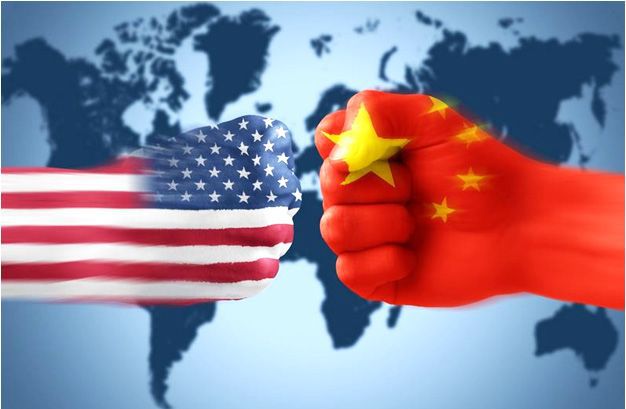As the US reciprocal tariffs take effect, China continues to roll out countermeasures. On April 9, the Customs Tariff Commission of the State Council announced that additional tariff rate on all U.S.-origin imports will be raised from the previously announced 34% to 84%, starting at 12:01 p.m. on April 10, 2025/
Just a day earlier, the U.S. government announced an increase in the “reciprocal tariff” rate on Chinese exports by 50% to 84%, and together with two earlier rounds of tariff hikes, the cumulative rate reaches 104%.
For products that had already been hit with a 25% punitive tariff during the previous trade war, the total tariff burden now stands at 129%. In addition, the U.S. has also raised the import tax on small packages under $800 from 30% to 90%, or up to $150 per item.
China has also filed a new complaint with the World Trade Organization (WTO) over the U.S.’s additional 50% tariffs on Chinese goods. A spokesperson for China’s Ministry of Commerce said that the U.S. tariff measures seriously violate WTO rules and that the additional 50% tariff is “a mistake upon a mistake,” highlighting the unilateral and bullying nature of U.S. actions.
China will firmly defend its legitimate rights under WTO rules and uphold the multilateral trading system and international trade order, he said.
After such heavy tariffs, trade between China and the U.S. is expected to largely come to a standstill in the short term. Many industry insiders said that the U.S.’s tariff increases are unaffordable for Chinese manufacturers, and American buyers will have to shoulder the extra cost.
Following China’s retaliatory actions, market analysts widely expect a notable drop in U.S. exports to China, which will create a gap in China’s demand for certain U.S. imports, opening up further opportunities for domestic substitution — especially in sectors with higher U.S. import dependency or large absolute import volumes.
Galaxy Securities notes that sectors like electrical machinery and high-end instrumentation — including semiconductor equipment and components are expected to benefit. While these categories have relatively low dependency on U.S. imports, the import value is significant, raising the bar for domestic alternatives. In agriculture, soybeans — both essential and relatively dependent on the U.S. — may see a price surge in the short term, it said.
China is the top export market for U.S. soybeans and cotton, the second-largest for integrated circuits and coal, and the third-largest for medical devices, liquefied petroleum gas (LPG), and automobiles. According to UN data, in 2024, China accounted for 51.7% of U.S. soybean exports, 29.7% of cotton, 17.2% of integrated circuits, 10.7% of coal, 10.0% of LPG, 9.4% of medical devices, and 8.3% of passenger vehicles.
As part of earlier retaliatory measures, China had already imposed 10–15% additional tariffs on select U.S. agricultural products. Since March 10, 2025, China has added a 15% tariff on chicken, wheat, corn, and cotton, and a 10% tariff on sorghum, soybeans, pork, beef, seafood, fruits, vegetables, and dairy. With this latest hike, China’s total tariff rate on U.S. agricultural products is now between 94% and 99%.
Energy and commodities pricing agency Argus said that China produces relatively little soybeans domestically and mainly relies on imports from the U.S. and Brazil. Brazil accounts for 71.07% of China’s soybean imports, while the U.S. supplies 21.07%.
“Being in the southern hemisphere, Brazil typically plants soybeans in September and harvests in January, meaning Brazil’s export season is currently underway and will last until August, likely covering China’s short-term import needs,” said Argus. However, after September, when Brazil’s exports decline seasonally and northern hemisphere suppliers remain limited, China’s soybean supply could come under pressure — depending on future policy developments.
Electronics are another major trade category between China and the US. Dongxing Securities believes the tariff hike will raise direct costs and trigger supply chain adjustments, and to cope with the increased cost burden, Chinese firms are expected to speed up domestic substitution and seek alternative suppliers in Japan, South Korea, and Europe.
Soochow Securities similarly notes that as mature semiconductor processes are more price-sensitive, higher import costs will encourage the development of domestic mature process chips. For advanced processes, continued technical progress and service improvements among Chinese equipment makers could accelerate equipment localization.
In addition, aerospace and aviation sectors — which rely heavily on U.S. imports — could face supply shortfalls under China’s countermeasures. According to Guosheng Securities, 58% of China’s aerospace imports and 52% of aviation imports come from the US. Galaxy Securities data shows that in 2024, half of China’s $12.4 billion aircraft imports came from the U.S., and steep tariffs may benefit French suppliers and China’s homegrown large aircraft industry.

